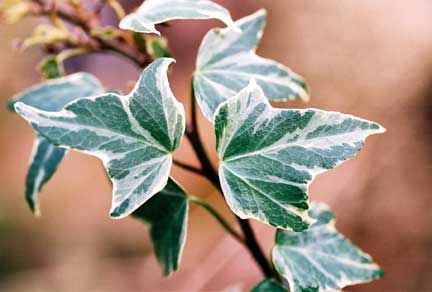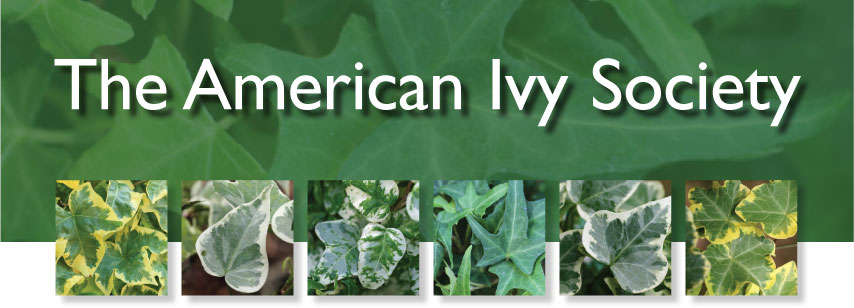|
Ivy of the Year 2005
Hedera helix 'Misty'

Photo Rachel Cobb
Hedera helix 'Misty' has been chosen as "Ivy of the Year 2005" by The American Ivy Society.
For an ivy to be chosen “Ivy of the Year” it must meet certain criteria. It must be easy to grow, hardy, lush, beautiful, and not invasive. ‘Misty’ not only meets these standards, but it is also one of the top six ivies used by professional growers for both large and small topiaries. It tends to be very consistent in leaf size throughout the year and with minimal acclimation it does well in full-sun
situations.
H.h. ‘Misty’ is a variegated, miniature, Bird’s Foot ivy in the Pierot Classification system, and was found as a mutation of H.h. ‘Needlepoint’ in the late 1970’s. Ivies are called “Bird’s Foot” when the shape of the leaves resembles the track a bird’s foot makes in the snow.
The leaves of ‘Misty’ have five narrow lobes in various shades of green and gray-green, with a thin white margin and white veins. The over-all color is silver gray. Under cool temperatures the white is suffused with a pink blush. Although it does well in the sun, the variegation does not fade in the shade, so it will also do well in a dark corner of the garden.
With its self-branching habit and small leaves, ‘Misty’ is well suited for pots, baskets and topiaries. It is winter hardy, surviving to at least –20 degrees F.
"Ivy of the Year"
Because of the surge in popularity of ivy as a pot plant as well as in the garden, The American Ivy Society announced it will select an "Ivy of the Year" annually commencing in 2001. The ivy chosen from the nominees must be easy to grow, hardy, lush, beautiful, and not invasive in the garden.
The "Ivy of the Year" will be chosen by a committee made up of members of The American Ivy Society, nurseryman and growers across the United States. Each ivy will have completed the three year trial period in The American Ivy Society test gardens as well as in commercial nurseries.
When The American Ivy Society was founded in 1974 there were approximately 60 different cultivars of Hedera (Ivy) grown commercially. Today there are over 480 named cultivars. The intense interest in ivy began when people learned that the new ivies are available in an array of colors ranging from all shades of green, green and white to yellows and golds - and they are not invasive as were many of the older cultivars. Some ivy leaves are so delicately cut they resemble the print a bird's foot makes in the sand, while others are curly or fan shaped. They are used as groundcovers, garden specimens, hanging baskets, mixed containers, topiary and the adult forms of ivy are even grown as shrubs.

|

